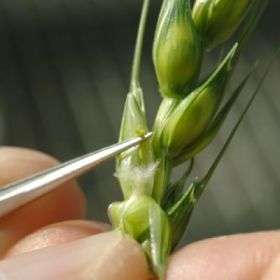Building disease-beating wheat

Pioneered by CSIRO researchers, in collaboration with the International Maize and Wheat Improvement Center (CIMMYT) and Sydney University, the research illustrates the major genetic improvements possible without genetic modification (GM) technology.
“Wheat breeders often use wild relatives of wheat as sources of novel genes in breeding new disease-resistant wheats,” research team leader Dr Phil Larkin says.
“Unfortunately genes from wild relatives usually come in large blocks of hundreds of genes, and often include undesirable genes. Furthermore, these blocks of genes tend to stay together, even after many generations of breeding.
“The problem can be so difficult to overcome that plant breeders sometimes give up on very valuable genes because they cannot separate them from the problematic genes.”
A paper published this month in the respected international journal Theoretical and Applied Genetics details how the team ‘recombined’ two wild blocks of genes from two different Thinopyrum grass species – a wild relative of wheat – bringing together resistance genes for leaf rust and Barley Yellow Dwarf Virus (BYDV), two of the world’s most damaging wheat diseases. The recombined gene ‘package’ may also carry a resistance gene against a new stem rust strain which is causing concern worldwide.
“The exciting part of the new research is that we have been able to retain the useful genes but leave behind the associated undesirable genes - most notably in this case those for yellow flour colour, an important quality characteristic in wheat,” Dr Larkin says.
By developing new ‘DNA markers’ and by careful testing the team has produced a number of the disease resistance ‘packages’ for wheat breeders, making it faster and easier to include these important disease resistance traits in future wheat varieties.
Source: CSIRO Australia















